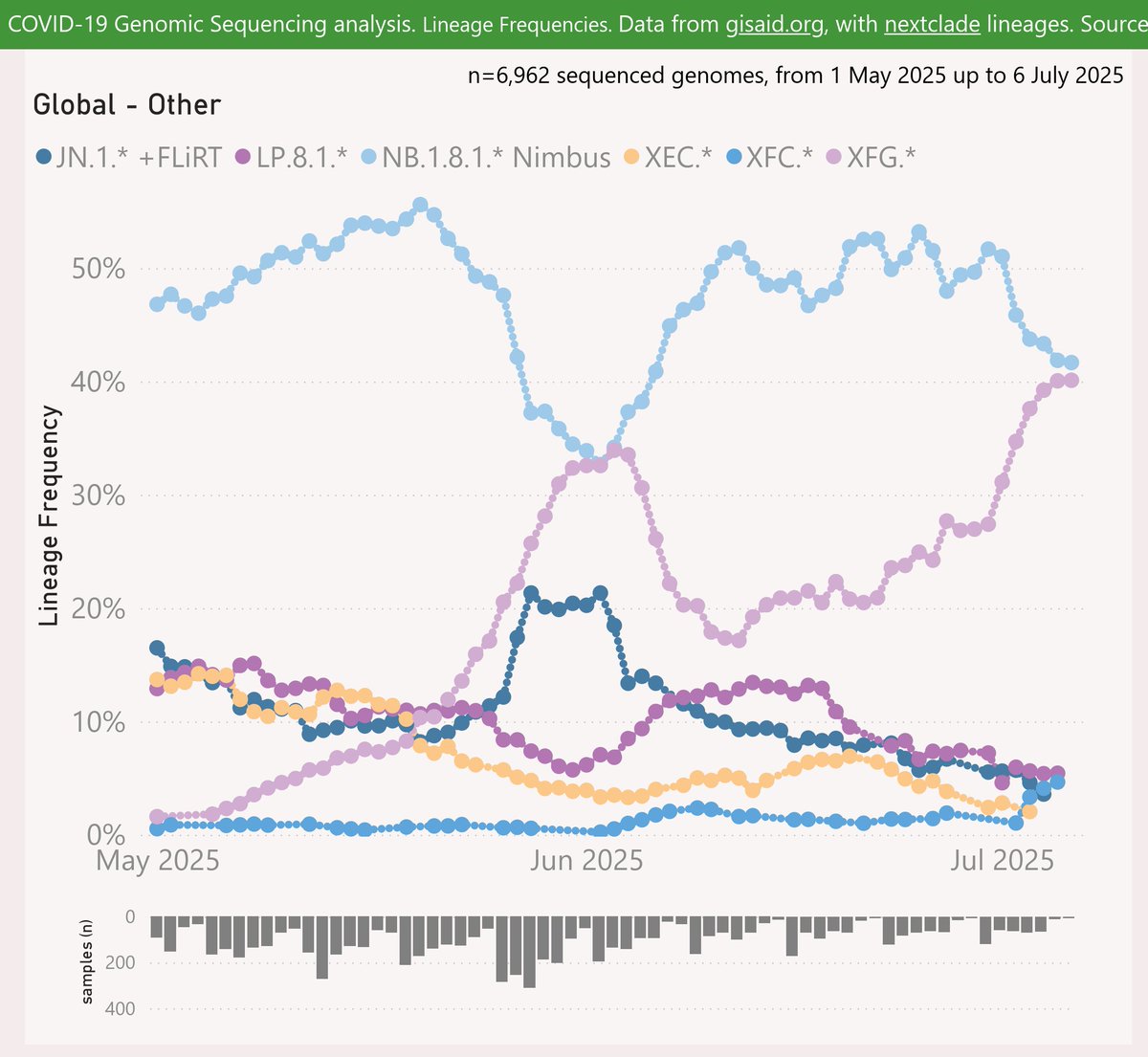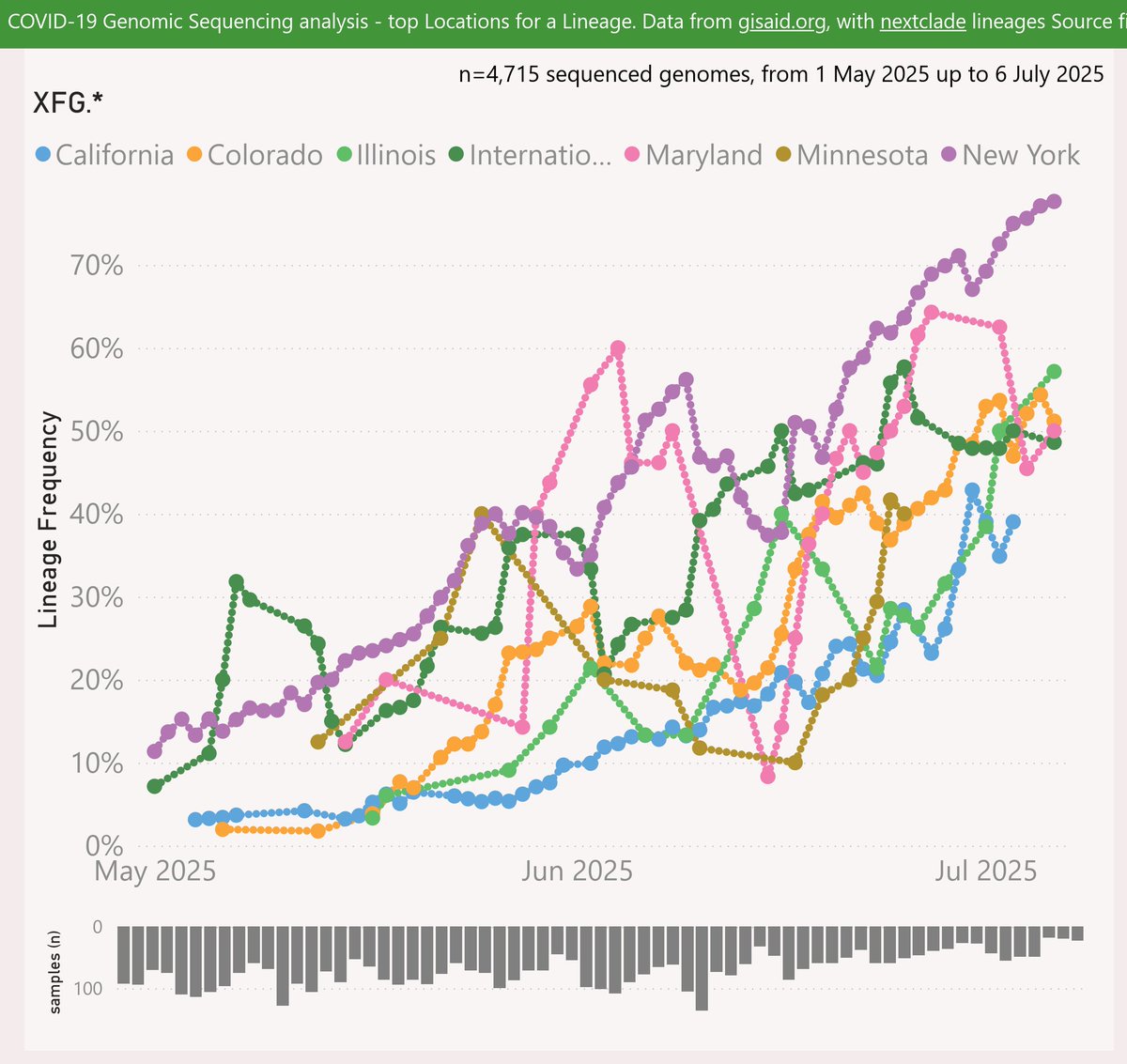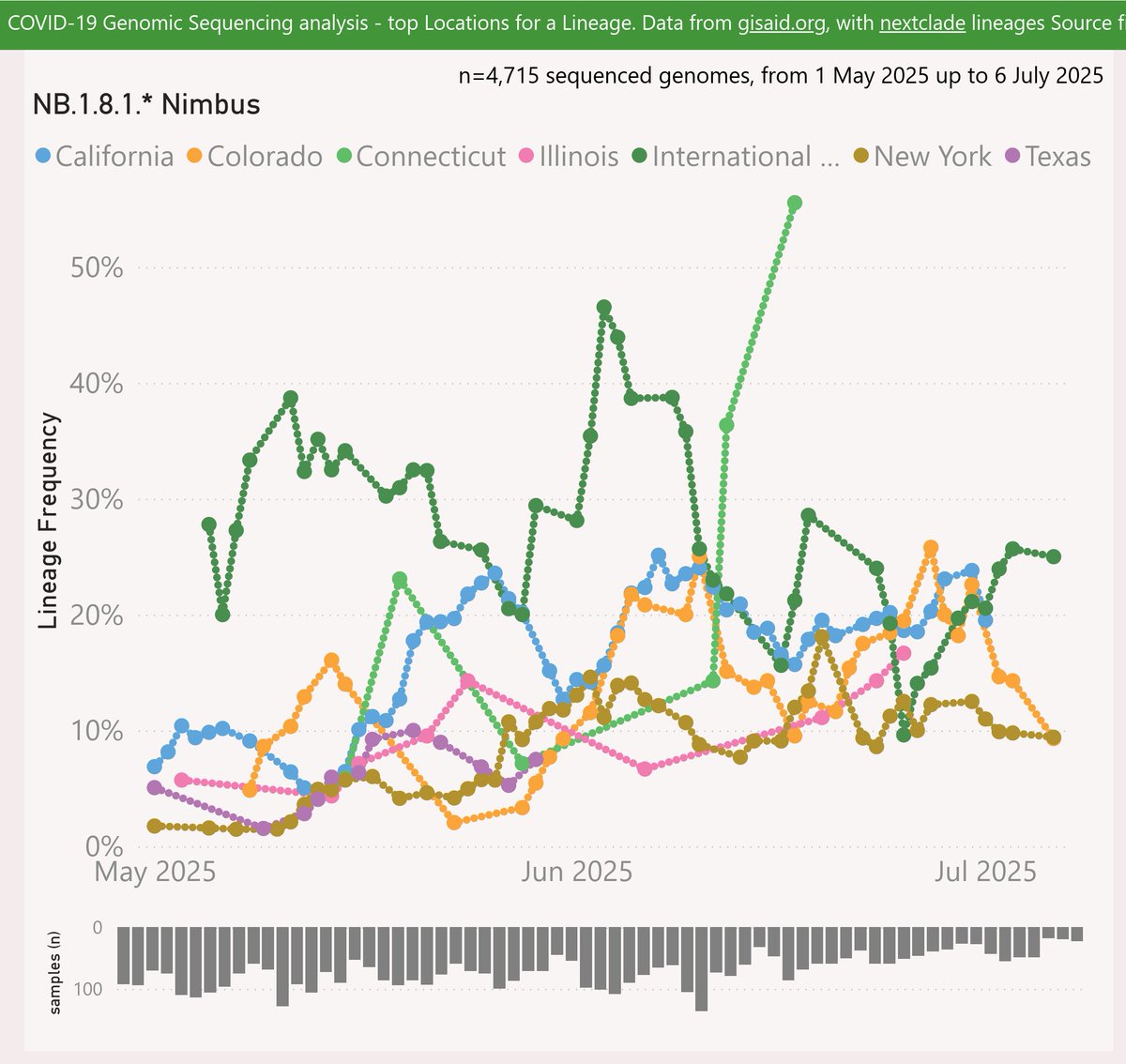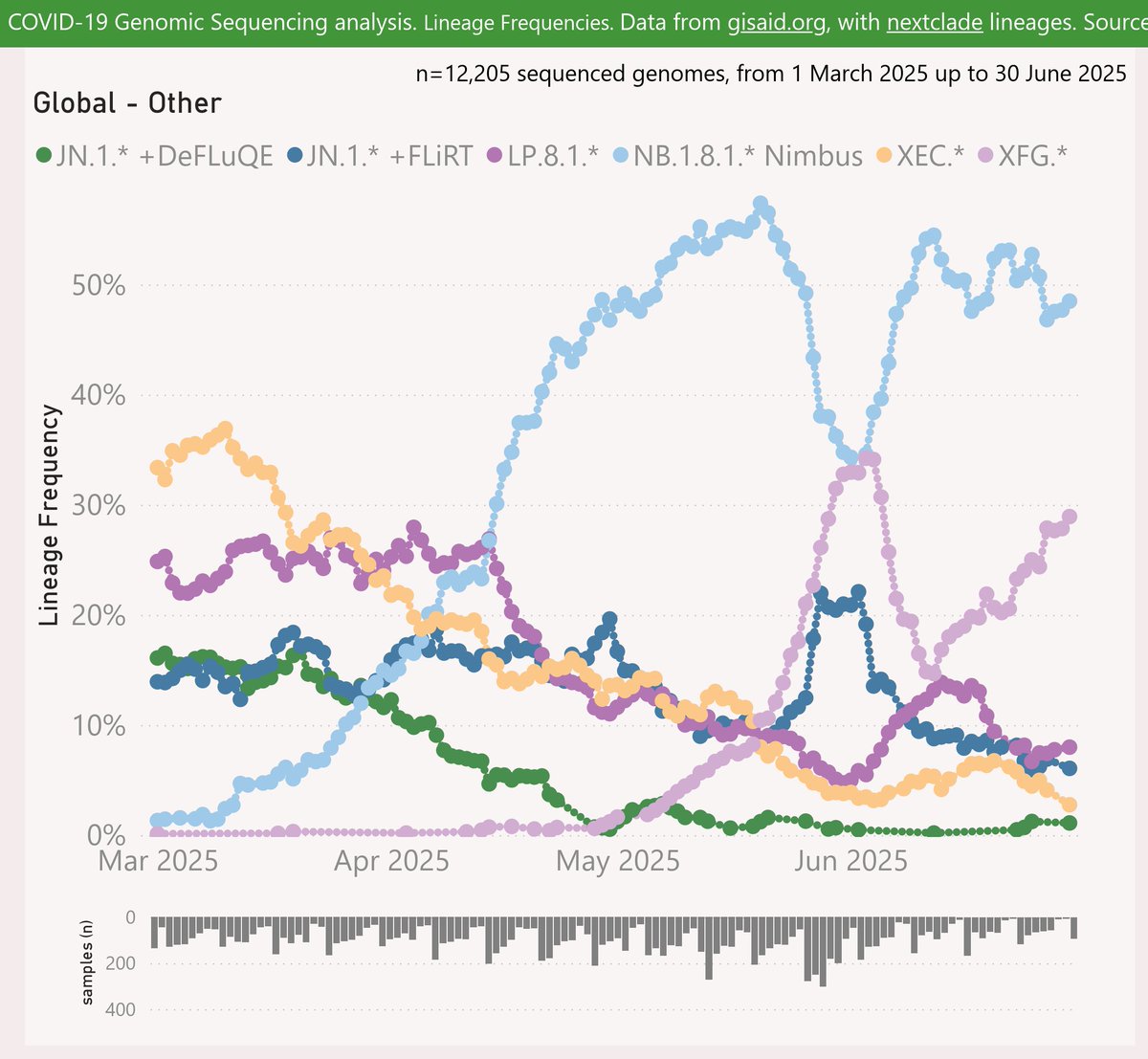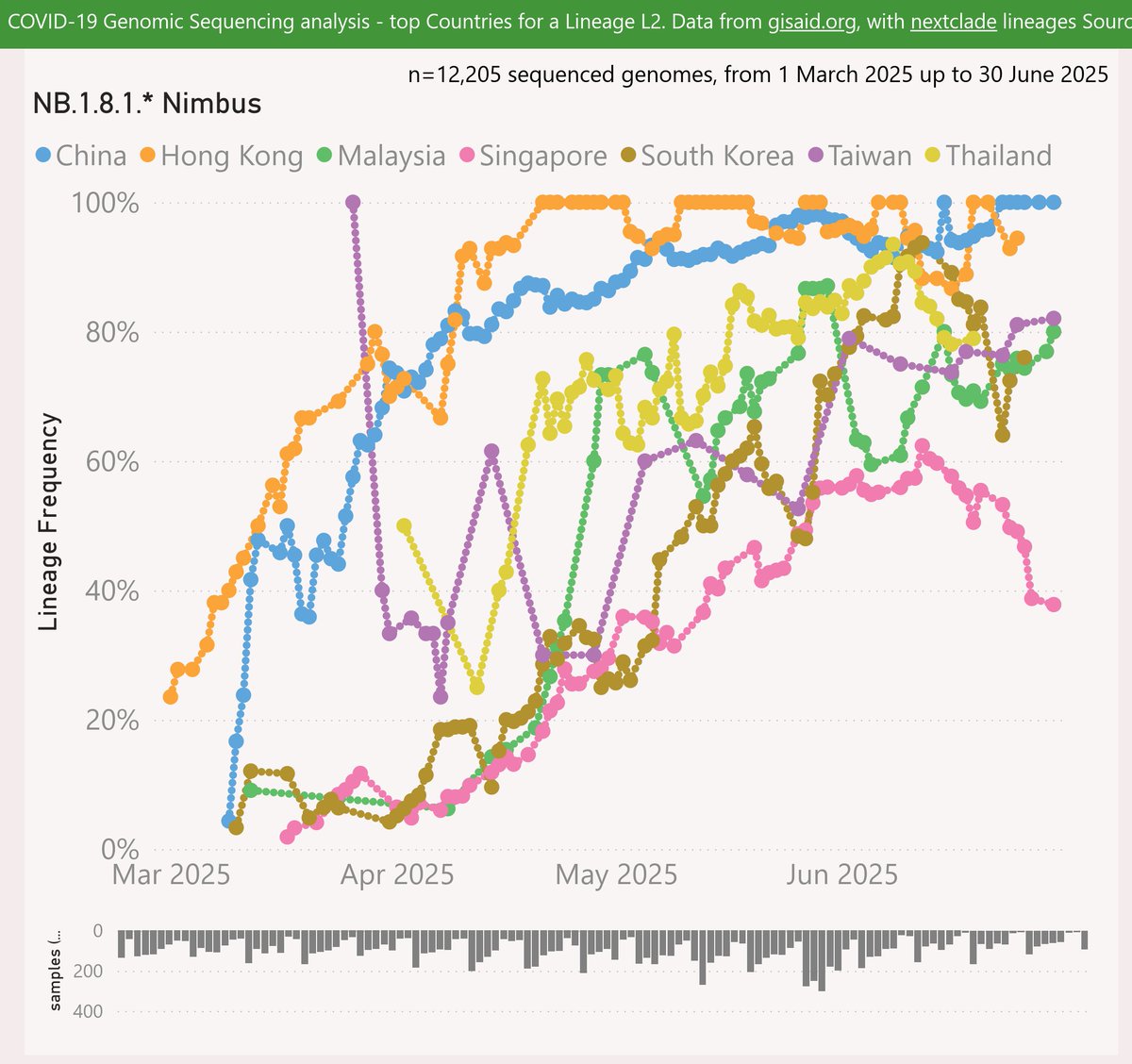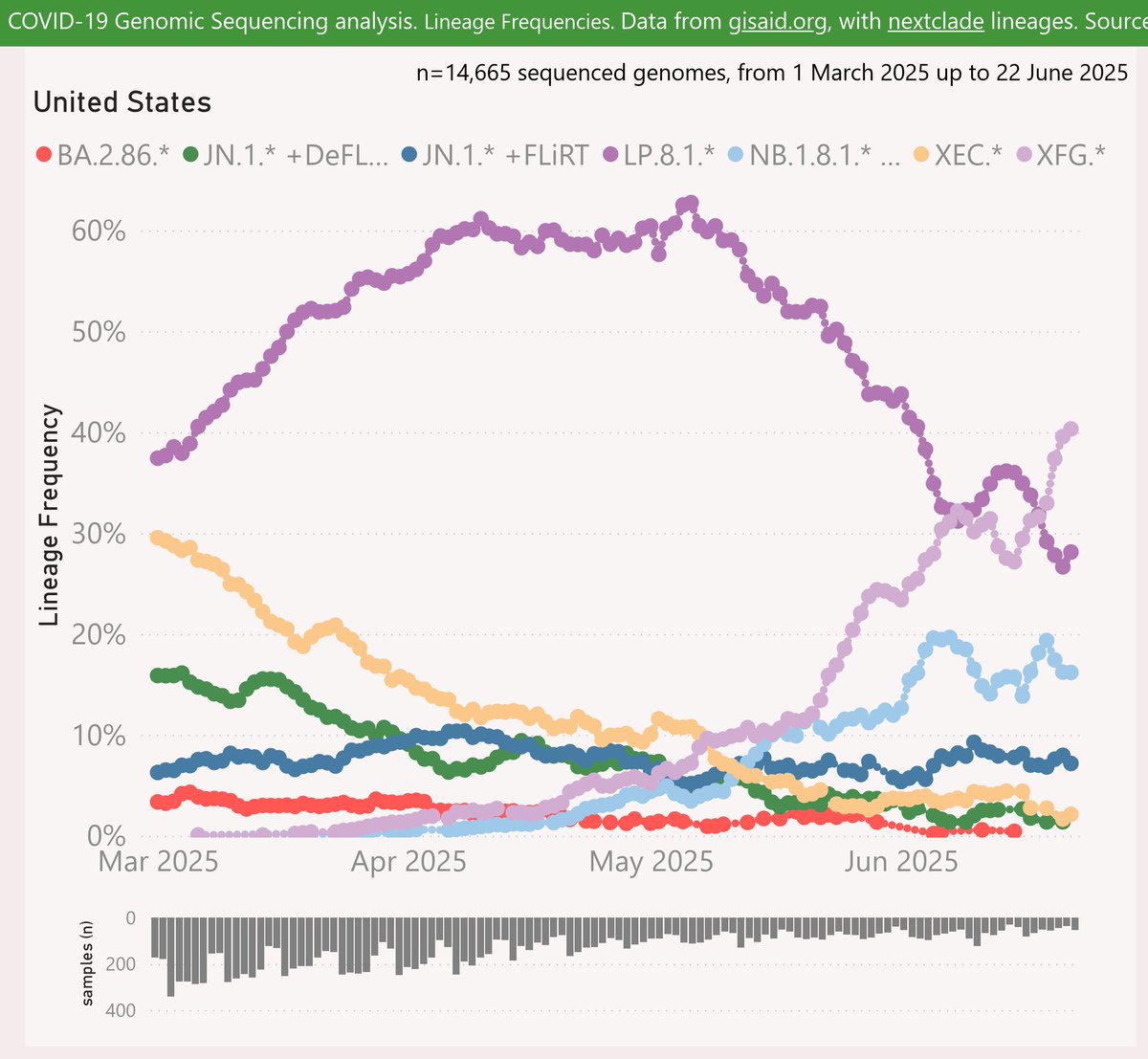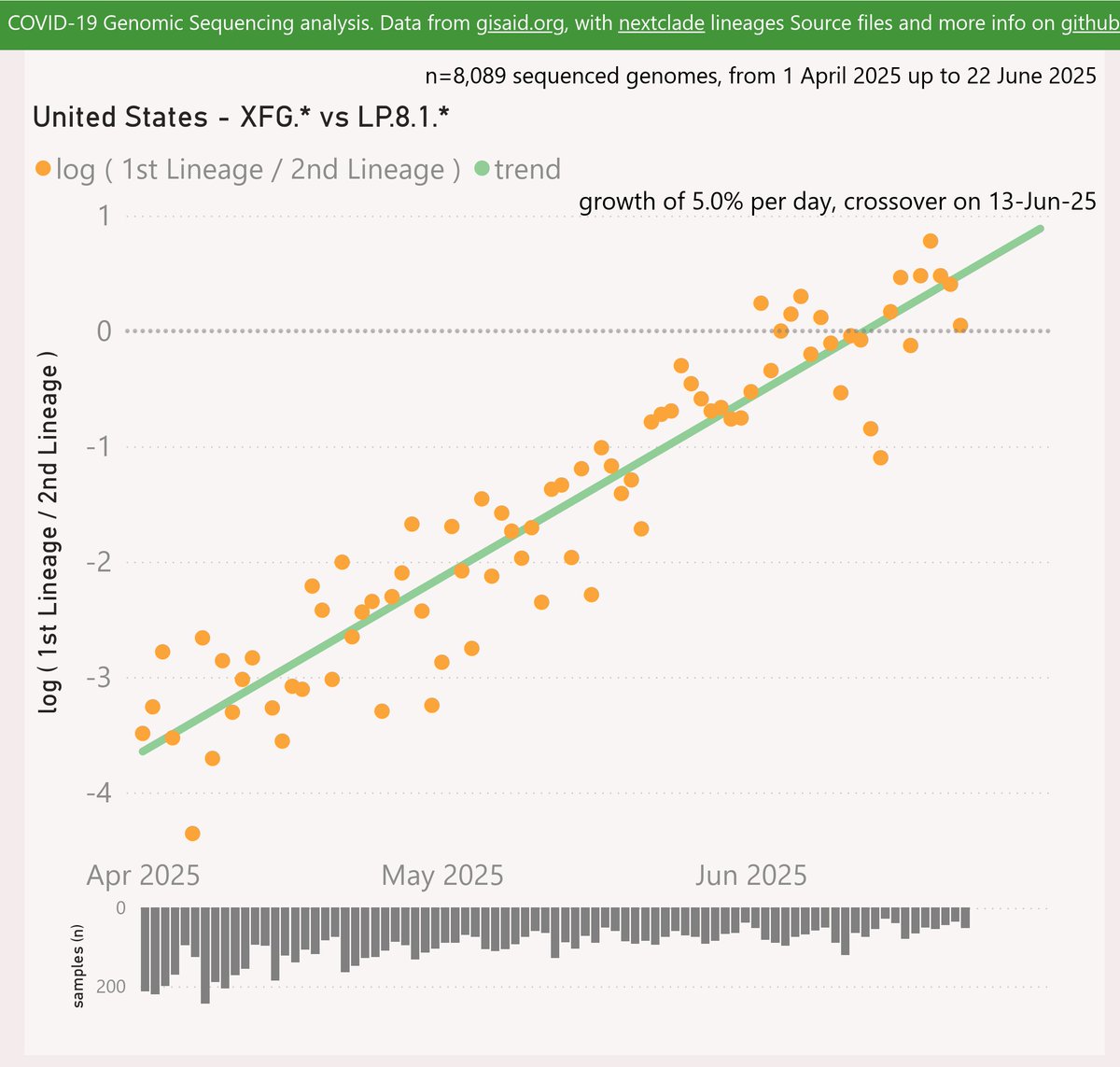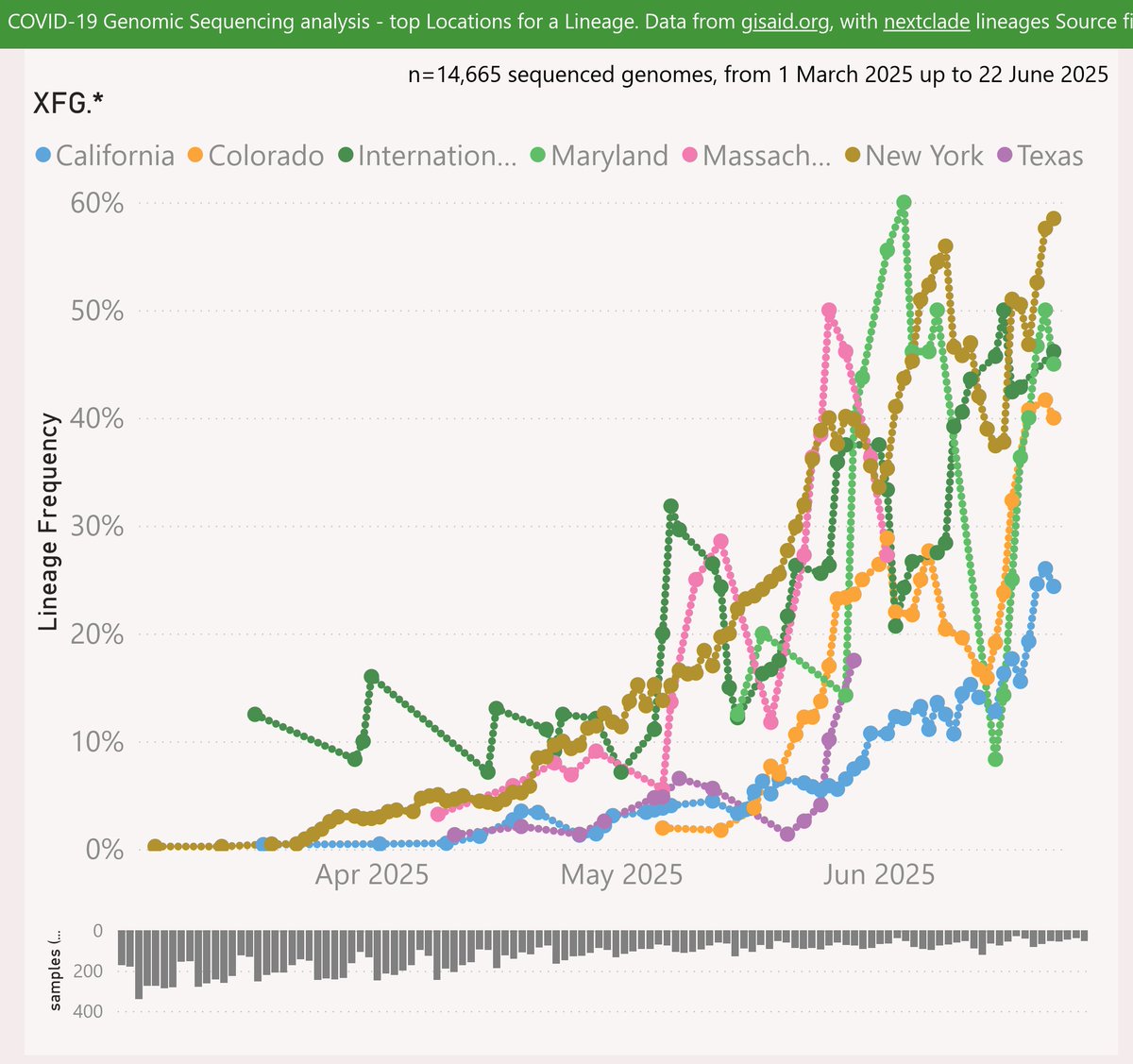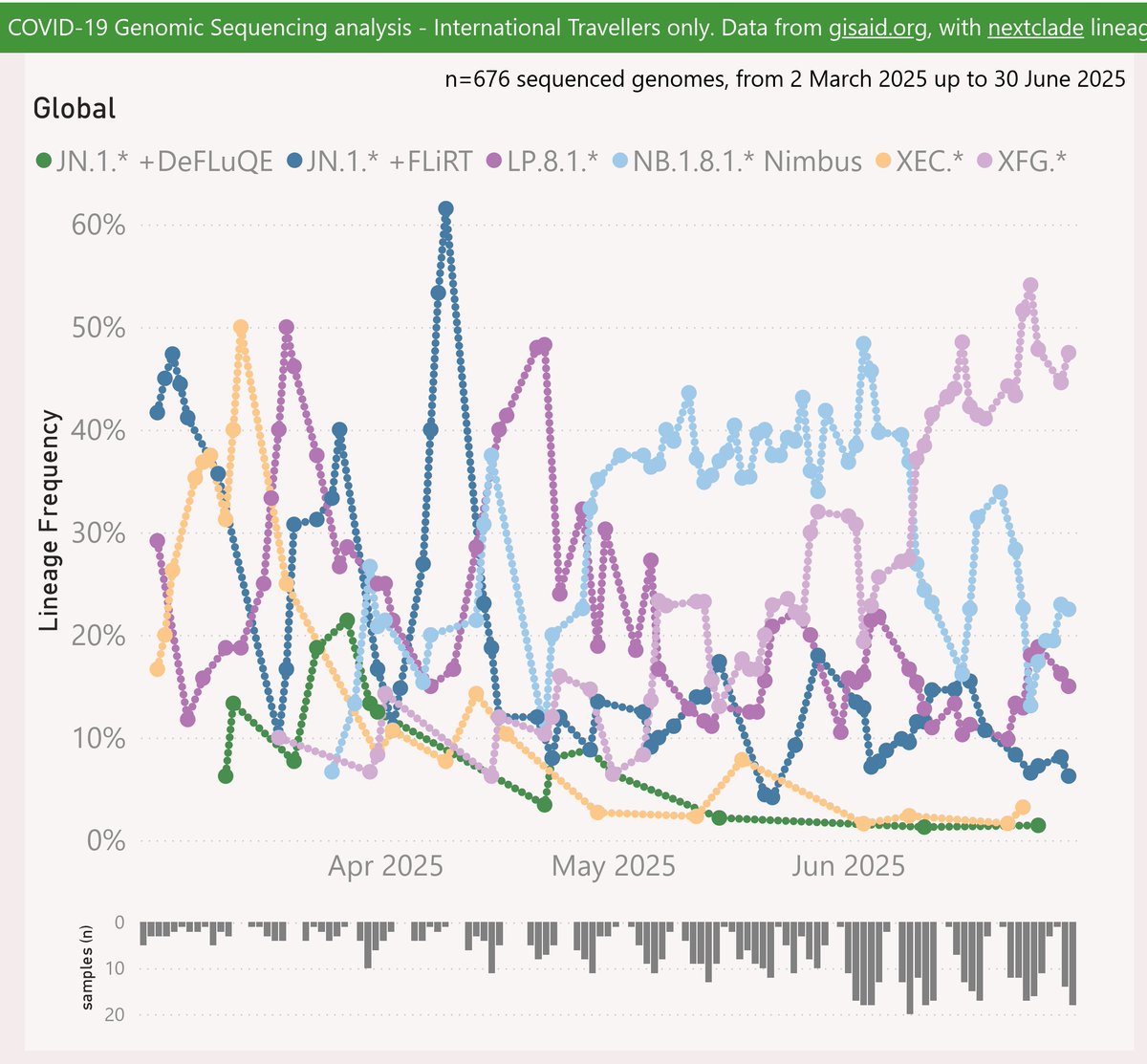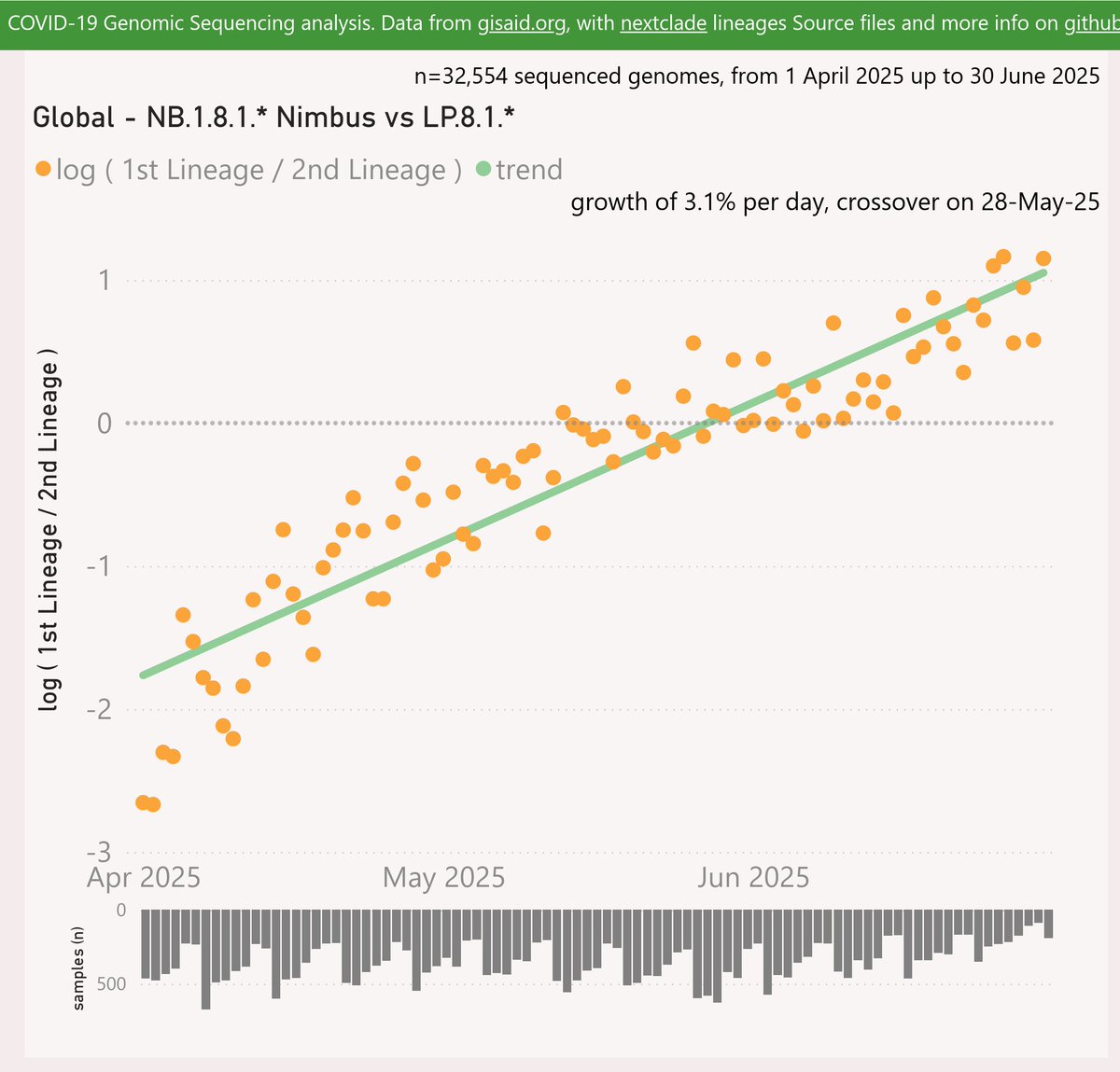Here's the latest variant picture for BA.2 (Omicron). Globally it is far less common than it's sibling BA.1 lineage. BA.2 has many unique mutations.
The frequency of BA.2 is rising in several countries, on similar trajectories.
(Linear then log scales)
🧵

The frequency of BA.2 is rising in several countries, on similar trajectories.
(Linear then log scales)
🧵


I'm now presenting these charts with both a linear Y-axis scale, together with a version using a log scale. A log axis helps compare growth rates.
The Frequency is calculated for each country independently, comparing to all the recent samples sequenced in that country.
The Frequency is calculated for each country independently, comparing to all the recent samples sequenced in that country.
Here are the other top countries in Europe, by BA.2 samples.
Although their frequencies are lower so far, Belgium, France, Germany, Norway and the Netherlands appear to be on a similar trajectory.

Although their frequencies are lower so far, Belgium, France, Germany, Norway and the Netherlands appear to be on a similar trajectory.
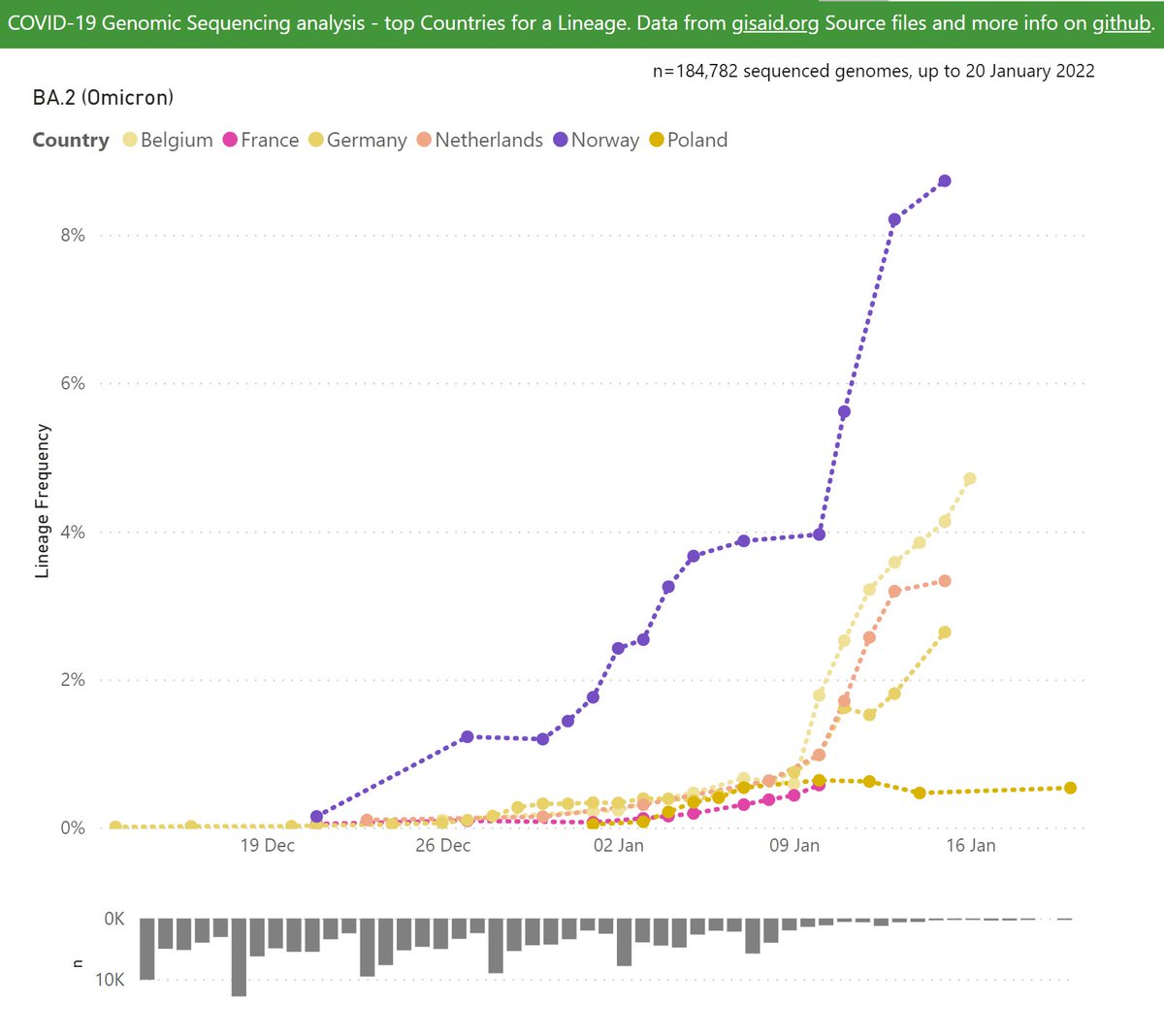
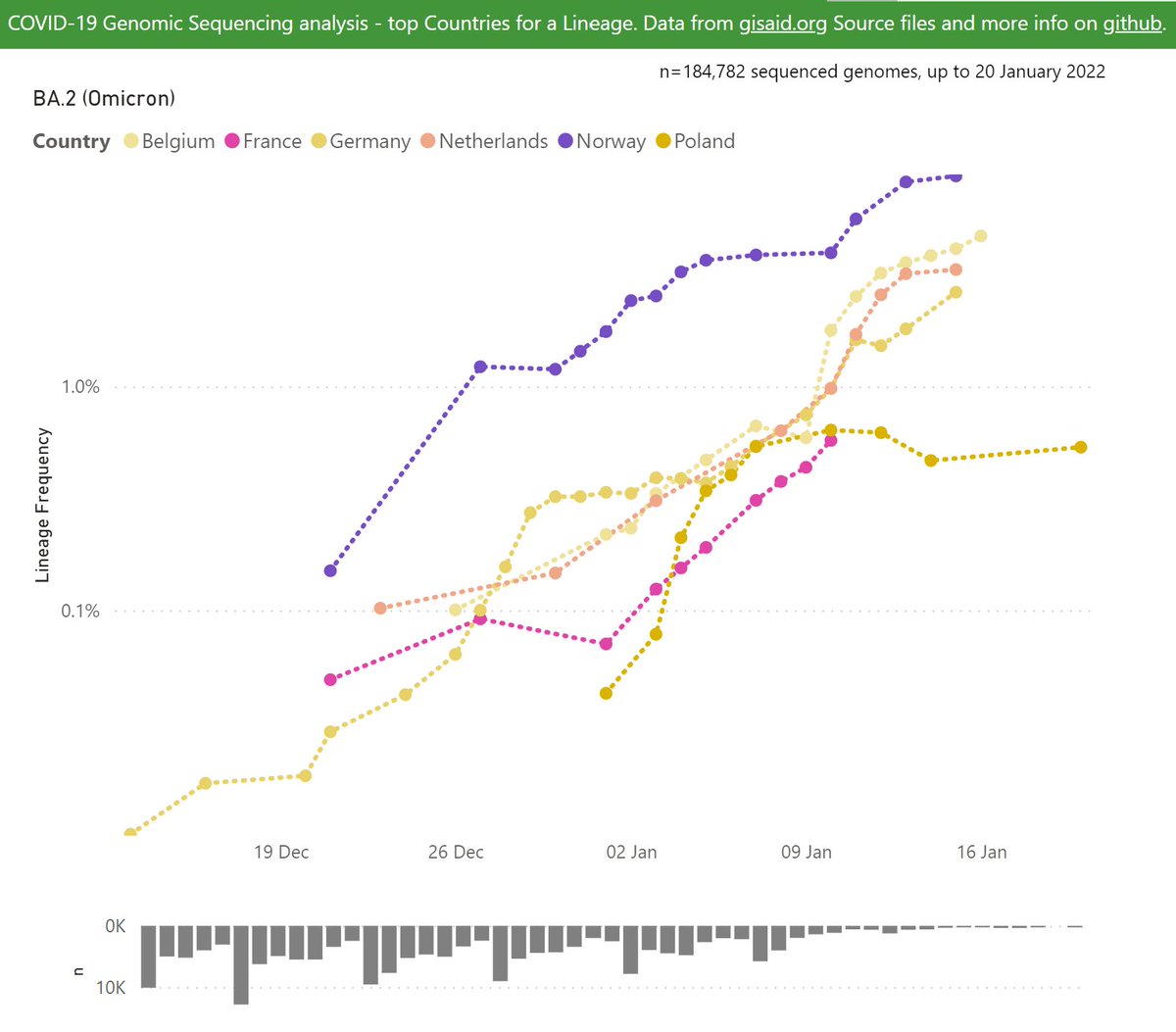
Here's a full variant picture for India. IMO the recent results for BA.2 need to be considered in the context that:
- recent sample sizes are very low (grey column chart)
- possible founder effects - relatively late start to their Omicron outbreak.

- recent sample sizes are very low (grey column chart)
- possible founder effects - relatively late start to their Omicron outbreak.


Here are the Indian states reporting the most BA.2 samples.
Note the recent steep rises in frequency have been dominated by Gujarat and Telangaina, so the recent national picture for India might only be representative of a few cities.

Note the recent steep rises in frequency have been dominated by Gujarat and Telangaina, so the recent national picture for India might only be representative of a few cities.


In Denmark, it seems that BA.2 has been out-competing BA.1 for some weeks now.
There are some anecdotal reports of re-infections of BA.2, especially among those relying on natural immunity from Delta or BA.1.

There are some anecdotal reports of re-infections of BA.2, especially among those relying on natural immunity from Delta or BA.1.


Interactive dataviz here:
github.com/Mike-Honey/cov…
github.com/Mike-Honey/cov…
Here's a great explainer thread on BA.2 from @PeacockFlu
https://twitter.com/PeacockFlu/status/1483768659420094464?s=20
In the USA, BA.2 has only been reported sporadically and at very low frequencies - so far.
Here are the top states by samples shared. Most shown have less than 5 samples.
Arizona is the only state with a solid set - 17 samples, rising to 0.8% frequency by 12 January.

Here are the top states by samples shared. Most shown have less than 5 samples.
Arizona is the only state with a solid set - 17 samples, rising to 0.8% frequency by 12 January.


• • •
Missing some Tweet in this thread? You can try to
force a refresh






